Keep reading for more tips to increase Instagram ad results.
#3: Use Multiple Instagram Ads Placements
What if you’ve already built a solid target audience that you don’t necessarily want to increase? After a while, your audience may see ad fatigue or your costs may start to increase. Fortunately, you can scale horizontally by including more Instagram placements.
When you first advertise on Instagram, you may focus only on where you should place your ads (in the news feed or the Explore tab). But when you include newer placements like Reels and Stories, you can reach a bigger percentage of your target audience while optimizing ad delivery and costs.
To update where your ad is shown, duplicate the ad set and scroll down to placements. Check all of the Instagram choices, including Feed, Explore, Stories, and Reels.
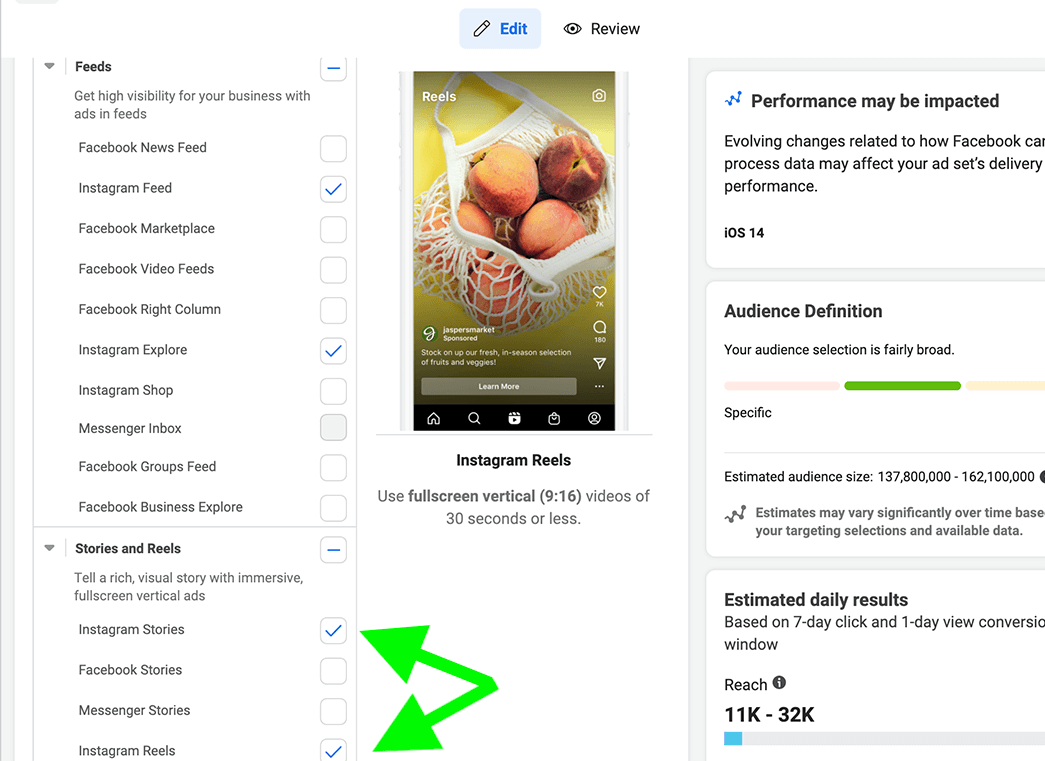
At the ad level, adjust your ad for each placement. Avoid making the big changes to the messaging or creative and pay more attention on perfecting image ratios and using available features. For example, you can include text overlays to Reels and interactive choices like polls to Stories.
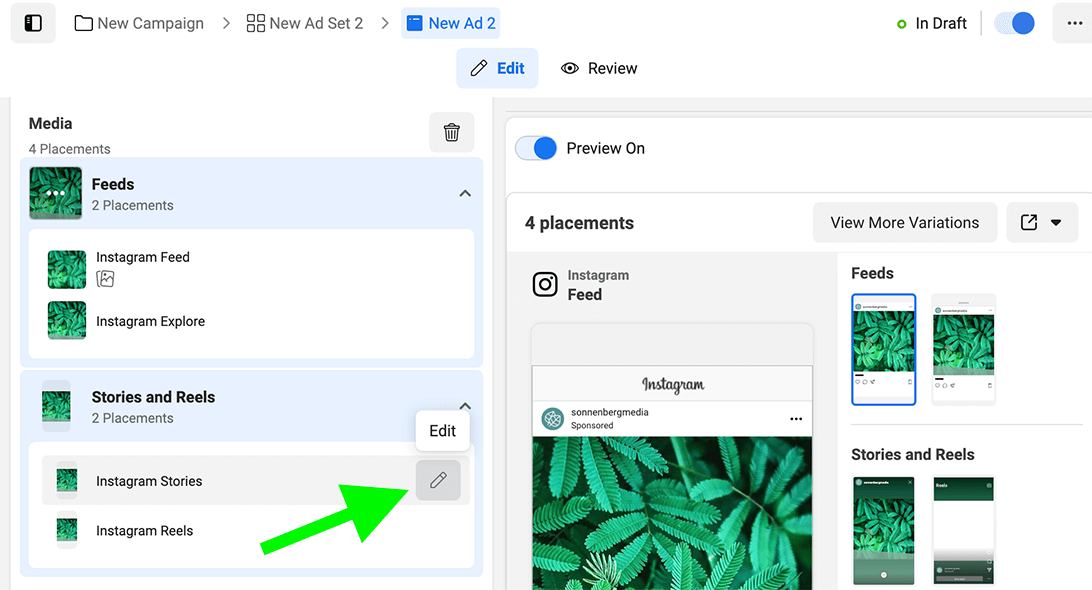
As you run the ad, remember to check the placement breakdown. Watch to see which placements work best for your audience and think about turning off placements that don’t drive results. Again, you can use the outcomes to guide future scaling efforts.
#4: Iterate on Top-Performing Instagram Ads
If you’re already using all available placements, you can still scale horizontally by using your top ads. However, it’s essential to note that identifying the best ad can become much more difficult when you use multiple customized options in Ads Manager. For example, you might be tempted to choose options like Dynamic Creative or Optimize Text Per Person to increase your Instagram ad results.
But Ads Manager typically aggregates outcomes—so you can’t always see which combination of creative parts or text field placements work the best for you. So if you’re considering horizontally scaling a campaign, set a goal to use static rather than dynamic or optimized creative elements.
Identify Your Best Ads
Before you can scale your ads, you should know which ones get the best outcomes. After all, you want to scale your top performers, not ads with average outcomes. To find your effective ads, visit your Ads Manager report and choose an ad set. Then sort ads based on CPC or cost per result.

Start with the best-performing ad. Duplicate it into the same ad set and then choose one of the choices below to iterate on the ad copy, call to action (CTA), or creative. Change one element at a time so you can accurately track what works effectively and what doesn’t work.
Change the Call to Action
The easiest thing to change is changing the CTA that appears on your ad. Choose the Call to Action drop-down menu and click another CTA that works with your offer. For example, you should try “Sign Up” instead of “Subscribe” or “Order Now” instead of “Shop Now.”
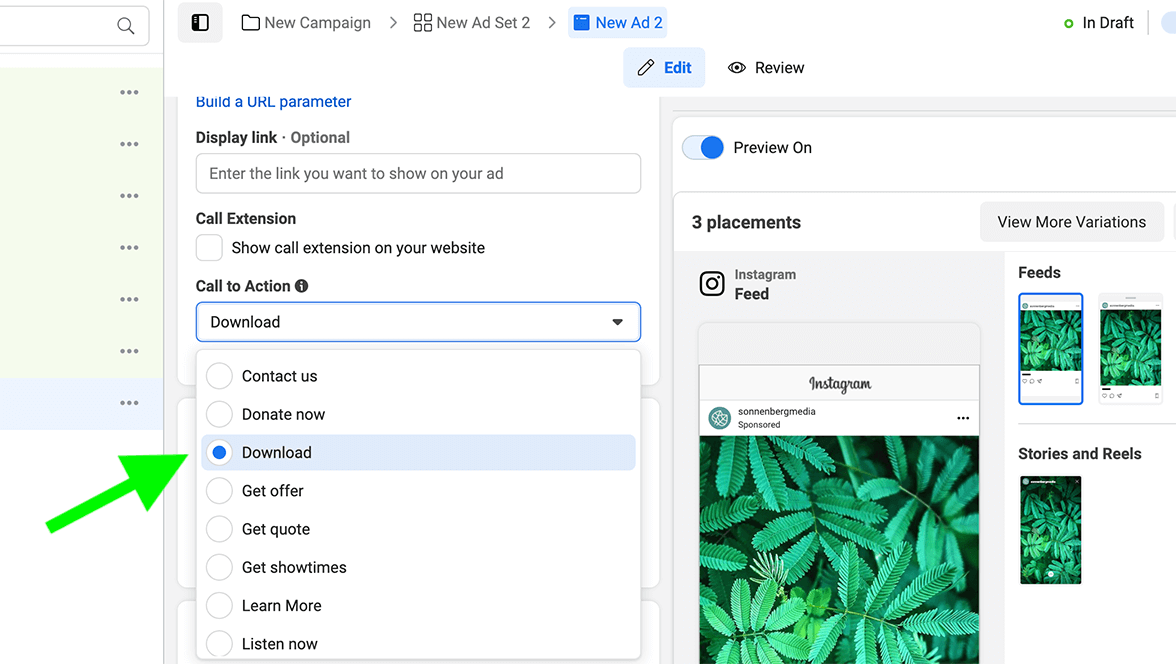
Modify Ad Copy
Another option is slightly modifying the ad copy. Aim to keep the overall message the same, but make minor edits. For example, you might place the in-text CTA at the beginning of the copy rather than at the end, or you might add or remove benefits.
Use a New Creative
You can also make small adjustment to the creative but avoid making major changes. For example, you might add a text overlay that reiterates the ad copy or crop other angles of the photo.
Pro Tip: 3 Ways to Increase Instagram Ad Fatigue
As you scale your campaigns, remember that the longer they run, the more likely they are to lead to ad fatigue. Check your results closely and look for changes in performance, especially as they become trends. For example, if you notice that costs are going up, results are going down, or impressions are plummeting, you may need to take extra steps to scale more effectively.
Set a Lower Frequency
If you start to see negative comment on your ads, your audience may be seeing them too frequently. If you’re using the Reach objective, you can arrange a lower frequency cap at the ad set level to make sure that your audience won’t see your ads as often. Try different frequencies to get the right balance for your target audience.
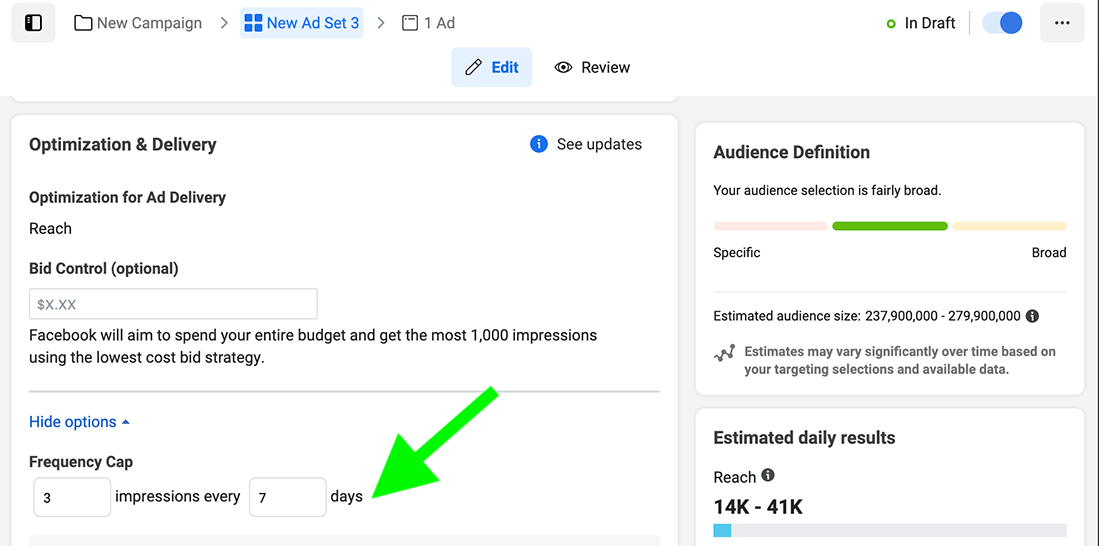
Use Reach and Frequency
Alternatively, create a reach and frequency marketing campaign rather than a standard auction campaign. You can select this buying type at the campaign level and then adjust the frequency at the ad set level. By default, reach and frequency campaigns deliver up to 2 times a week. However, you can change the frequency that you know works effectively for your business instead.
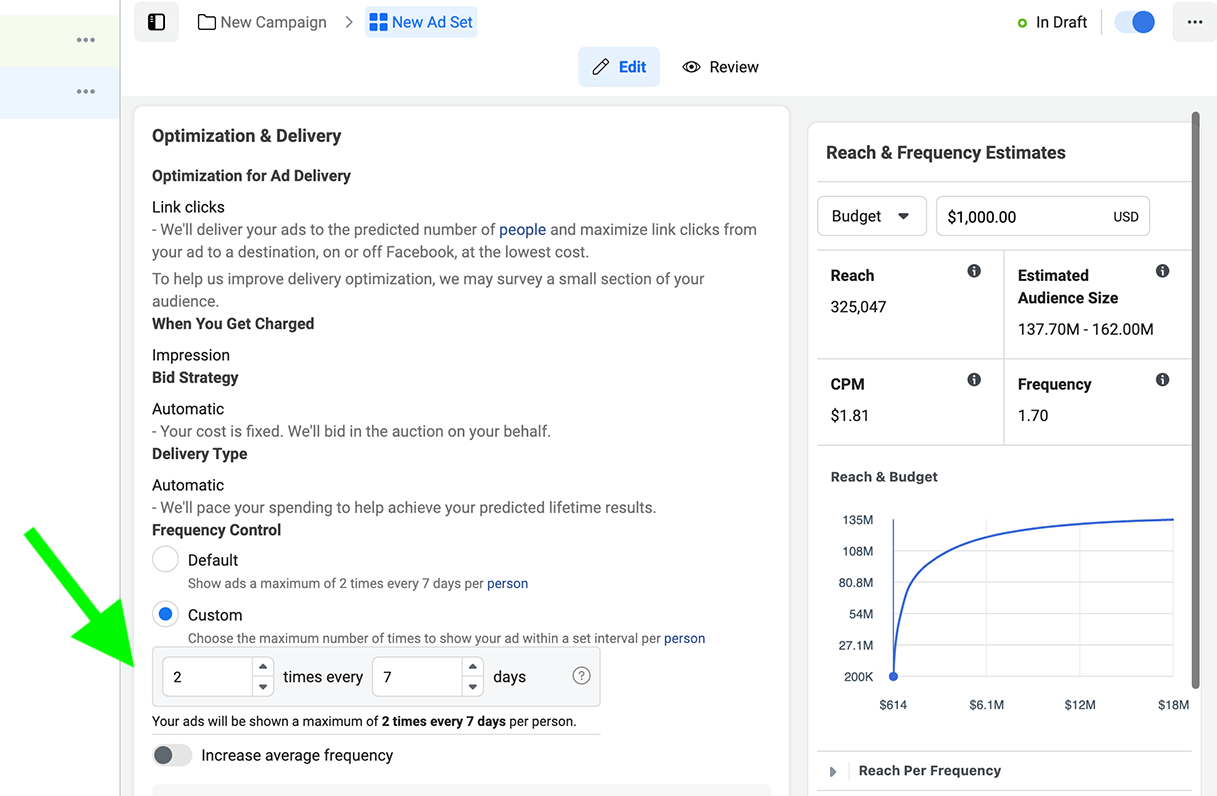
Remember that reach and frequency campaigns are a little less flexible than auction campaigns. Because you can’t change audience targeting or placements for published reach and frequency campaigns, it’s better to avoid using them for testing purposes.
Promote a New Offer
If you’ve tested different creatives but you’re still struggling to increase it, consider adjusting your offer. That may mean providing a discount on your products or services, creating a new lead magnet, or giving a free consultation.
Start by using a campaign structure, a target audience, and ad placements that you already know will work effectively. Then use the same steps outlined above to scale your new offer horizontally or vertically.
Conclusion
It’s easy to assume that increasing your campaign budget is the right—or only—way to increase Instagram ad results. But if you expand your audience, test new ad placements, and iterate on your best-performing ads, you can increase your Instagram ad horizontally and drive impressive results.

